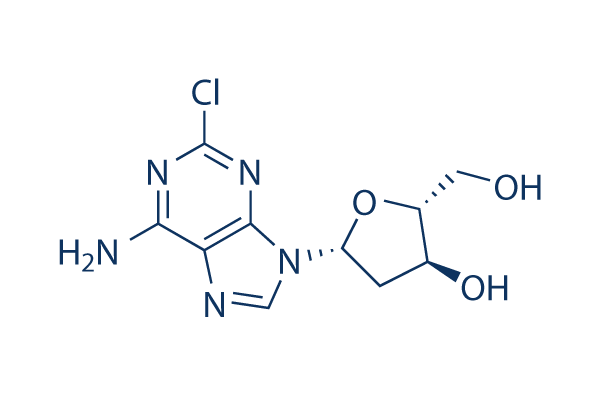Cladribine Shows Efficacy, Tolerability Among Patients With MS Switching From Infusion DMTs

In a small real-world cohort, annualized relapse rates were reduced for patients with multiple sclerosis who switched to cladribine (Mavenclad; EMD Serono) from ocrelizumab (Ocrevus; Genentech), natalizumab (Tysabri; Biogen), and alemtuzumab (Lemtrada; Sanofi Genzyme).
New data presented at the 2022 European Committee for Treatment and Research in Multiple Sclerosis (ECTRIMS) Congress, held October 26-28, in Amsterdam, the Netherlands, suggest that patients with multiple sclerosis (MS) in a real-world setting who switched their treatment to cladribine (Mavenclad; EMD Serono) from infusion therapies experienced reduced annualized relapse rates (ARRs) and tolerated the oral purine antimetabolite well.1
All told, the ARRs for the cohort 1 year and 2 years prior to a switch in disease-modifying therapy (DMT) were 0.58 and 0.7, respectively. Over the 2-year course of the study (May 2019 to March 2022), the post-DMT switch ARR was 0.17 for patients with at least 1 year of follow-up (n = 23).
The prospective and retrospective chart review study, conducted by Donald Negroski, MD, neurologist, Negroski Neurology, and clinical assistant professor, Department of Clinical Science, Florida State University College of Medicine, and colleagues at the MS Center of Sarasota, included 84 individuals with relapsing MS. Those included were between 18 and 74 years old and were treated with at least 1 dose of oral cladribine. Of those 84 individuals, 33 (39.3%) switched from high-efficacy infusion treatments, including ocrelizumab (Ocrevus; Genentech), natalizumab (Tysabri; Biogen), and alemtuzumab (Lemtrada; Sanofi Genzyme).
“Cladribine tablets are a short-course oral DMT administered in four, 4-to-5-day courses over two years. Cladribine tablets are indicated for the treatment of adults with relapsing forms of MS based on data from pivotal clinical trials, including the phase 3 study, CLARITY, and its extension. Switching DMT in patients with relapsing forms of multiple sclerosis is quite common,” Negroski and colleagues wrote.1
The phase 3 CLARITY study (NCT00213135) data, originally published in 2010, suggested that treatment with cladribine tablets significantly reduced relapse rates, the risk of disability progression, and MRI measures of disease activity at 96 weeks.2 Specifically, treatment with cladribine resulted in significantly lower ARR than in the placebo group for the 3.5-mg group and the 5.25-mg group (0.14 and 0.15, respectively, vs. 0.33 for placebo; P <.001), a higher relapse-free rate (79.7% and 78.9%, respectively, vs. 60.9% for placebo; P <.001), a lower risk of 3-month sustained progression of disability (3.5-mg group: HR, 0.67; 95% CI, 0.48-0.93; P = .02; 5.25-mg group: HR, 0.69; 95% CI, 0.49-0.96; P = .03).2
Of the 33 patients, 14 patients (16.7%) switched from ocrelizumab, 13 (15.5%) from natalizumab, and 6 (7.1%) from alemtuzumab. The mean washout period was 75 weeks in the overall subgroup, then 45 weeks in the ocrelizumab group, 20 weeks in the natalizumab group, and 160 weeks in the alemtuzumab group.
As for safety, 9% of the group reported grade 0 lymphopenia and grade 1 lymphopenia, while 42% reported grade 2 lymphopenia, 39% reported grade 3 lymphopenia, and none reported grade 4. The most common adverse effects occurring at a rate greater than 5% were fatigue, headache, upper respiratory, and urinary tract infection.
“Owing to [the] short follow-up time, it was not possible to assess long-term outcomes. Ongoing follow-up will further expand on these results as more patients complete their full treatment course,” the group noted.
Many analyses of cladribine since CLARITY have been published, including data from earlier in 2022 at the Americas Committee for Treatment and Research in Multiple Sclerosis (ACTRIMS) Forum 2022, held February 24-26, in West Palm Beach, Florida. Those findings, from the phase 4 CLASSIC-MS study (NCT03961204) suggest that patients who experienced a first clinical demyelinating event and were treated with cladribine (Mavenclad; EMD Serono) over a median of 9.5 years of follow-up since the last dose experienced long-term sustained efficacy, delayed conversion to clinically definite multiple sclerosis (MS), and fewer second relapses compared with nontreated patients.3
Since the first dose in their parent study, 50% (n = 78) of patients exposed to cladribine experienced a conversion to clinically definite MS compared with 77.5% (n = 55) of the unexposed group, with a median time to conversion for the groups of 3.36 years (range, 0.0-11.1) and 1.21 years (range, 0.0-10.7), respectively. In the cladribine-exposed group, 53.2% of patients remained relapse-free since their last parent study dose compared with 28.2% of the unexposed cohort.
REFERENCES
1. Negroski D, Sellers S, Khiabani A, Khiabani D. Real-world experience switching from high-efficacy infusions to cladribine tablets. Presented at: ECTRIMS Congress; October 26-28, 2022; Amsterdam, Netherlands. EP1055.
2. Giovannoni G, Comi G, Cook S, et al; CLARITY Study Group. A placebo-controlled trial of oral cladribine for relapsing multiple sclerosis. N Engl J Med. 2010;362(5):416-26. doi:10.1056/NEJMoa0902533.
3. Leist T, Giovanonni G, Aydemir A, et al. Primary Results from 8-11 Years of Follow-up in the CLASSIC-MS Study Show Long-term Efficacy for Patients Who Received Cladribine Tablets in ORACLE MS. Presented at ACTRIMS Forum; February 24-26, 2022; West Palm Beach, Florida. P107.
https://www.neurologylive.com/



